Follow the Ancient Amber Road
See the remnants and relics of key routes between Venice and St. Petersburg for transporting amber through the ancient world
/https://tf-cmsv2-smithsonianmag-media.s3.amazonaws.com/filer/7a/24/7a246448-c1e5-4eea-adfe-35b0dbc54eb0/mining_amber.jpg)
Since about 3000 BCE, amber found its way out of the Baltic Coast region to greater Europe and beyond, carried by traders and travelers along a series of routes, intersecting with the salt and silk roads. According to Anna Sobecka, an amber art expert with the International Amber Association, the resinous gemstone made it all the way to Egypt, adorning the breast ornament of Tutankhamun. Baltic amber has also been found at Mycenae in Greece, and in the Royal Tomb of Qatna in Syria.
While under ancient Roman power, the Amber Road took the form that's most commonly known today: running vertical, one end near Venice and Rome, and the other close to St. Petersburg in Russia. Other paths branched out from this main line, shipping amber all across Europe and into Asia.
“It is important to realize that the Amber Road is an archeological concept, and not a road name used by the ancient Romans,” says Anders Hammarlund, researcher at the universities of Stockholm, Gothenburg and Uppsala. “The term was coined in the 1920s by the Cambridge archaeologist José Maria de Navarro to denote a set of trails or paths connecting the Baltic and the Adriatic during antiquity. Here, people have been trading since Neolithic times. Salt from the salt mines of Central Europe—sought after by the peoples of northern Europe—was exchanged with amber from the Baltic shores, which was then sold to Mediterranean peoples. This trade intensified when the Roman Empire expanded north of the Alps, and in some Roman cities the fabrication of amber art wares reached almost industrial proportions.”
Today, travelers can pay a visit to these former stops along the Amber Road, where there are still remnants of past trading and some monumental amber creations.
Amber Room; St. Petersburg, Russia
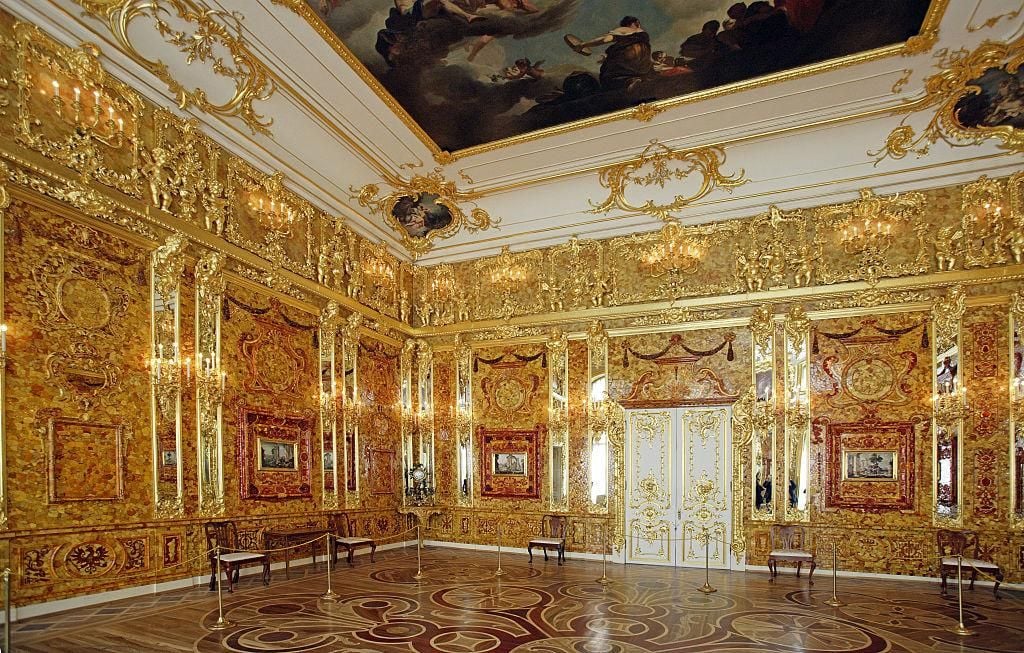
Often called “The Eighth Wonder of the World,” the Amber Room has a mysterious history. It was originally in Charlottenburg Palace in Germany, then Prussia. Construction began in 1701 on the jewel- and amber-encrusted room, and when it was completed it garnered attention from royalty—like Peter the Great, who so admired it that the then king of Prussia presented it to Peter as a gift. The room was moved and installed in Catherine Palace in Russia, where it stayed intact until German soldiers in World War II disassembled it, shipped it to Germany, and had it reinstalled in a castle museum. In 1943, the room was again packed away, but then it disappears from history. No one knows what happened to the original panels, believed to contain six tons of amber. The Amber Room has since been replicated back in Catherine Palace, and visitors today can observe the almost-glowing walls on a tour.
Kaliningrad Amber Combine and Amber Museum; Kaliningrad, Russia
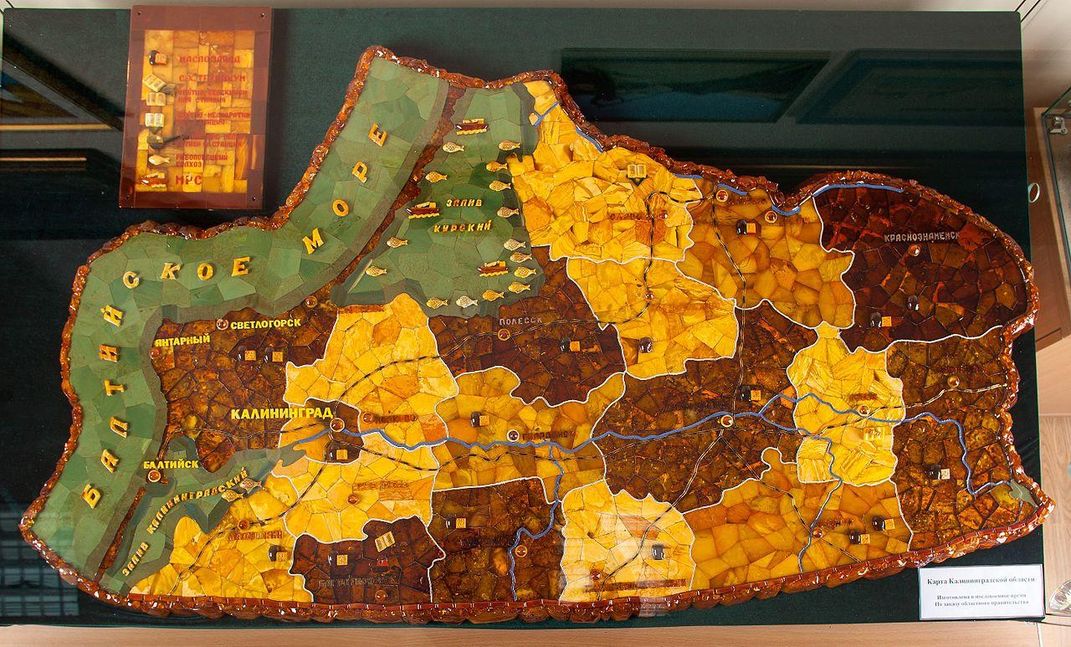
Kaliningrad has two must-see sites for amber. The first, the Amber Combine, is the only remaining industrial amber production site in the world. At the Amber Combine, visit the observation deck over the Primorsky pit, where you can see the quarry itself, and a roughly 1,550-pound amber pyramid. Kids can try their hand at being an amber miner in a special exhibit. In September 2017, the combine opened a new Amber Chamber exhibition hall that explores the history of the gemstone.
The second site is the Amber Museum in downtown Kaliningrad. It has 28 exhibition rooms, specializing in amber that contains fragments of ancient plants and animals. The exhibits explore the history and present state of amber, and works of contemporary art that feature the stone. Other items on display include amber household items and jewelry.
Amber Museum; Gdansk, Poland
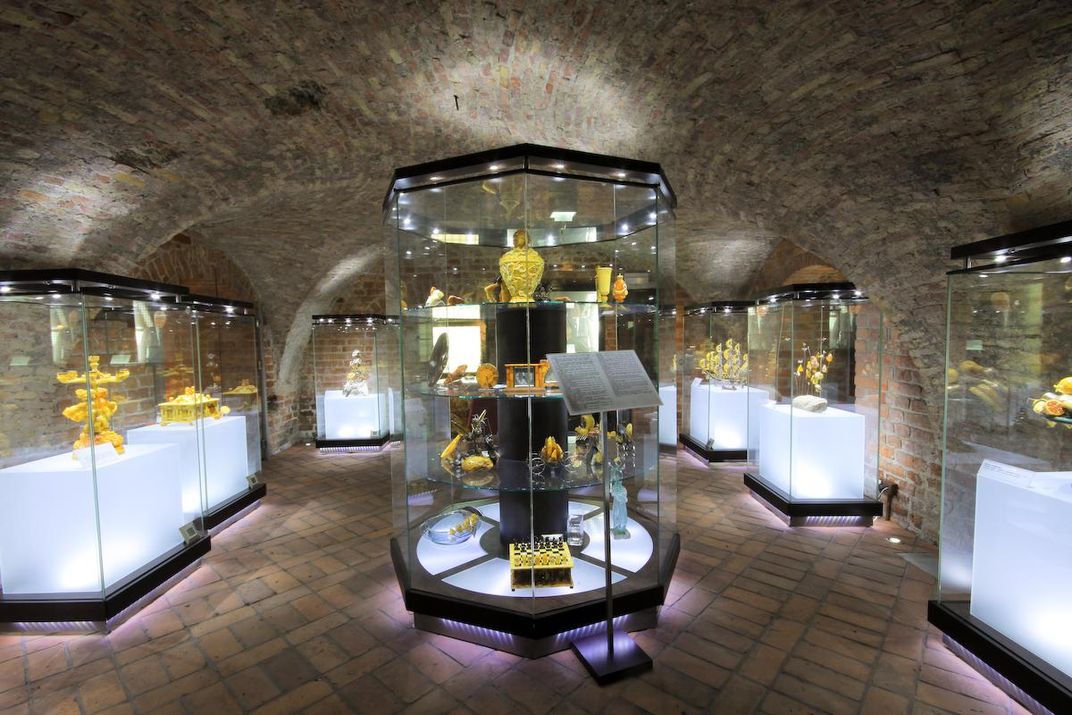
According to Sobecka, Gdansk is considered the "World Capital of Amber." The port city on Poland's Baltic coast is home to the International Amber Association, and every year hosts the World Amber Council. The Amber Museum here, though, is the real showstopper. It’s housed in a medieval prison tower and torture chamber. Exhibits explore the history of amber and where the trade stands today, plus the role that amber once held in medicine and magic of the past. The museum’s most treasured exhibit is a private collection of Gdansk-produced amber artwork from the 17th and 18th centuries.
Malbork Castle Museum; Malbork, Poland
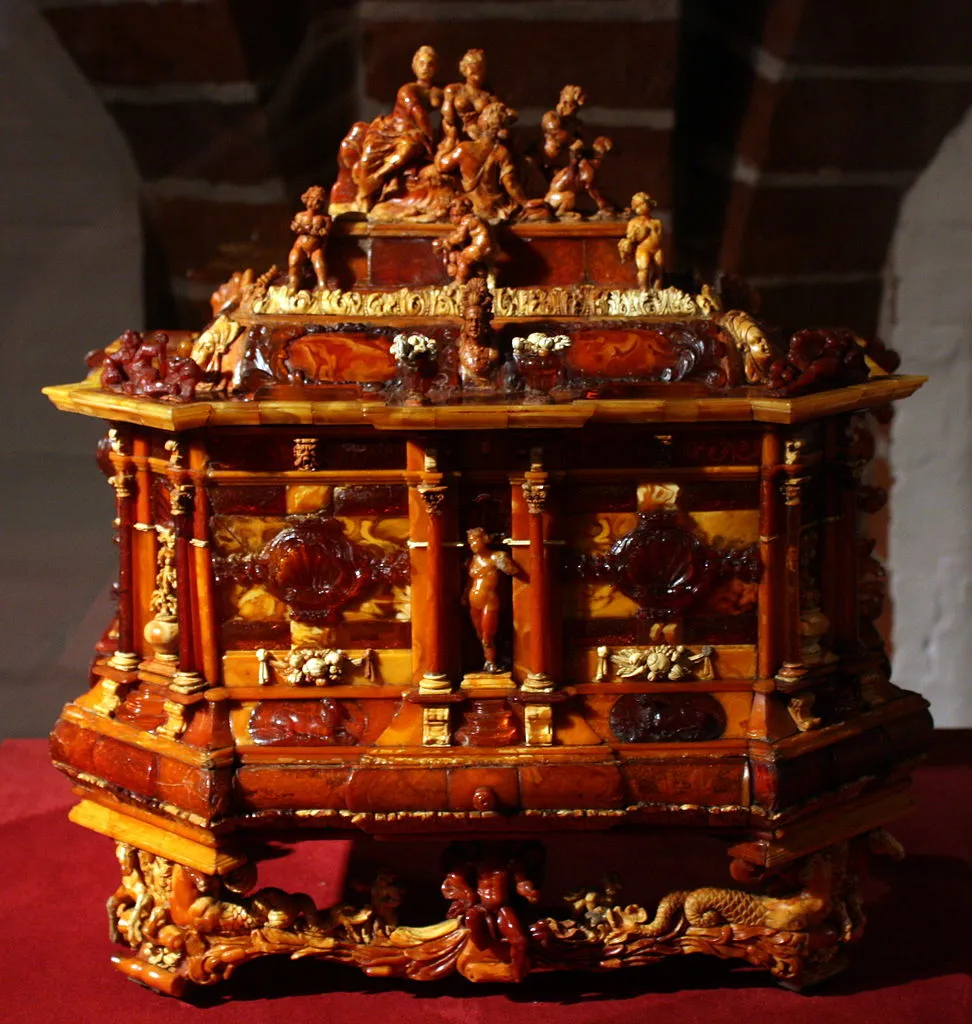
Unesco site Malbork Castle in northern Poland was built in the 13th century, and is the largest brick castle in the world by land area. It belonged to the Teutonic Order, which had control over amber production and movement after the Romans. Fitting to the castle’s history, its museum has a large amber exhibition with three main sections: one for contemporary art pieces, one for natural amber pieces with inclusions, and another for amber relics. The natural amber collection has more than 700 pieces alone. One of museum's prized items is an opulent amber goblet that was once owned by William Hunter, the founder of the oldest museum in Scotland, the University of Glasgow's Hunterian Art Gallery. The two museums collaborated on an exhibit, and afterwards the goblet was sent in pieces to Malbork and reassembled for display.
Carnuntum Archaeological Park; Carnuntum, Austria
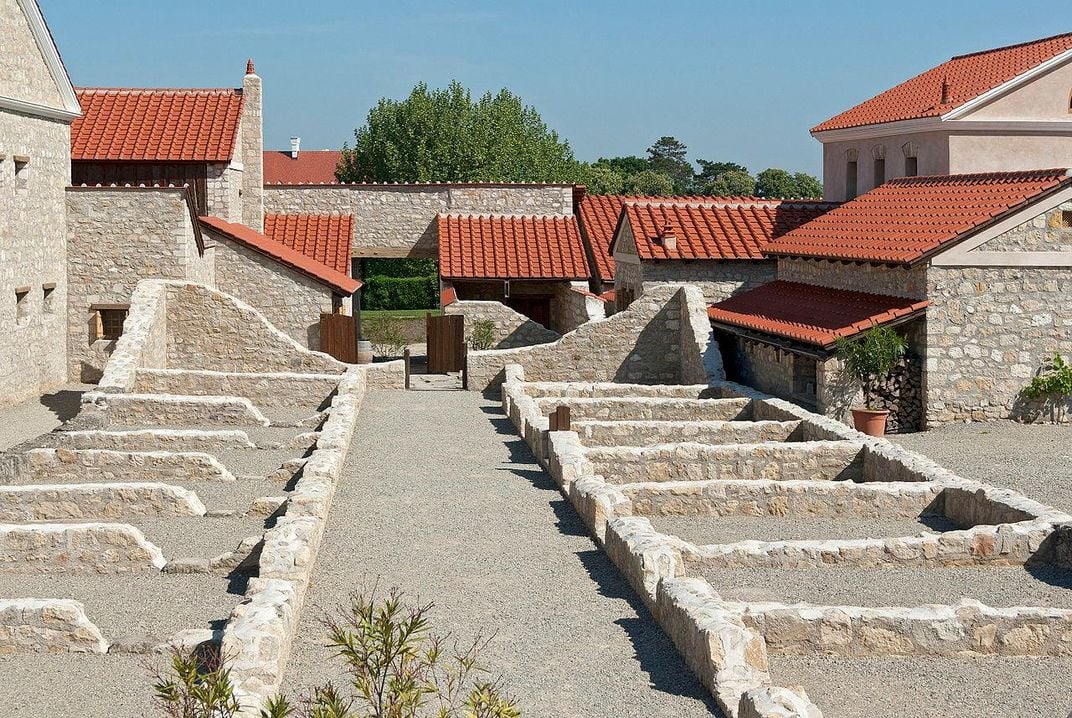
According to Hammarlund, Carnuntum was the main trading point on the Amber Road. It was once a thriving Roman city, initially built as a winter camp for Tiberius in 6 CE. At its height, more than 50,000 people lived in the city. Here, the Amber Road and the Limes Road, another ancient trading route, intersected. Today, Carnuntum is an archaeological site, with continuing excavations to learn about and on which to piece together the history of both the Romans and trading within the city. A portion of Carnuntum has been painstakingly restored, and an on-site museum houses ancient objects including amber pieces found during excavations.
The National Archaeological Museum of Aquileia; Aquileia, Italy
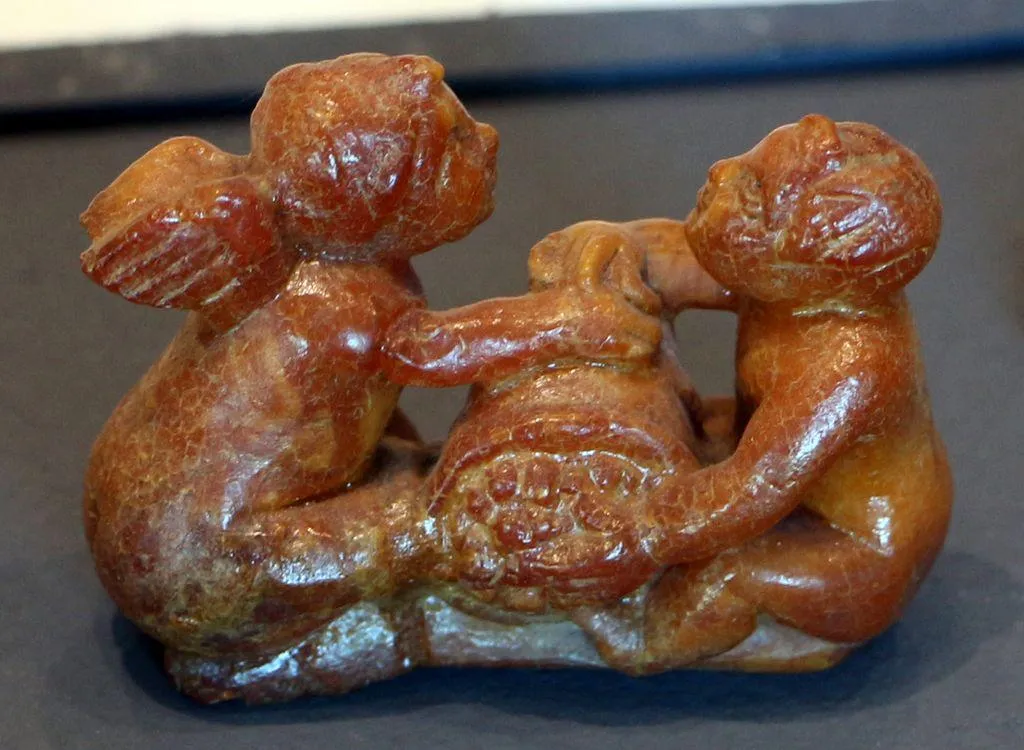
Aquileia, an ancient Roman city in northeast Italy on the Adriatic Sea, was important on the Amber Road for a couple reasons. For one, it was near one end, so it was an origin point for amber—apparently, the stone used to wash up on the shore regularly, so merchants then could collect supply there. Secondly, Sobecka says, sculptors here shaped amber into different pieces before shipping it off to other stops along the road. Aquileia today is one of Italy’s main archaeological sites, and The National Archaeological Museum of Aquileia has an impressive amber collection with a large amount of meticulously carved statuettes.
/https://tf-cmsv2-smithsonianmag-media.s3.amazonaws.com/accounts/headshot/JenniferBillock.png)
/https://tf-cmsv2-smithsonianmag-media.s3.amazonaws.com/accounts/headshot/JenniferBillock.png)